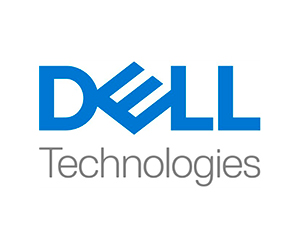HCI breaks down silos and makes it easier to manage the entire appliance or stack. Some vendors provide data protection and disaster recovery options within the HCI stack, which eliminates the need for separate recovery products and protects the inherent simplicity of an HCI offering.
Under its parent company, Dell Technologies, Dell EMC is a global provider of products and services that include servers, storage and networking. The company introduced its VxRail program — a leader globally in the HCI space — in 2016.
HCI Provides Customers with Scalable, Expandable Solutions
Chad Dunn, Dell EMC’s vice president of product management for HCI, says his customers are overwhelmingly moving to HCI — “away from where you have separate compute, storage and networking” to an all-in-one solution.
He says customers — both government and in the private sector — report HCI is more scalable, and they can expand as needed more quickly. The on-demand nature of the technology, he says, also has fueled growth in the HCI market.
Gartner reports that HCI “solutions are making substantial inroads into a broader set of use cases and deployment options.” And IDC reports the market for HCI solutions will reach $10.4 billion by 2022.
“This has been a pretty big sea change in terms of how customers are building their infrastructure,” Dunn says.
The origins of HCI, he says, are in virtual desktops that eventually led to data storage using VMware technology. As it matures, he adds, “it’s more about Infrastructure as a Service, self-service portals.”
And, as customers deploy an increasing number of applications on HCI, data protection solutions for HCI have become more critical, according to an IDC white paper.
“To reduce management complexity and risk, most HCI customers prefer data protection solutions that are tightly integrated with their HCI systems,” IDC says in the 2019 white paper. “Such an integration greatly simplifies management and automation of backup, recovery, and archive operations.”
“Furthermore, customers want their data protection solutions to seamlessly work with virtual machines that are hosted on HCI systems as well as standard environments composed of self-selected components.” READ MORE: Get tips on how to prepare for data center consolidation.
READ MORE: Get tips on how to prepare for data center consolidation.
Automation, Programmability Sought by HCI Customers
HCI also offers advantages in automating and standardizing some security based on customers’ varied needs. In the highly regulated government space —particularly in an international workspace — there are clear advantages.
Dunn recently returned from a customer advisory council event in London. There, he says, customers expressed a desire for more automation, API integration and programmability of the infrastructure — features Dunn says are in the works. The next phase of HCI will be to make it programmable and automated, Dunn says.
“Our largest customer is updating 300 sites a day. You can’t do that without API automation,” he says.
“Anyone who is anyone is going to kick the tires on HCI,” Dunn adds. “Many of our customers first explore HCI offerings when it’s time to upgrade and refresh their servers.”
The question, then, is whether HCI fits their needs at their price point. “It’s rare we encounter an opportunity when they aren’t going to look at it and actually embrace it,” Dunn says.
Brought to you by:










